Peppers and chilies from your garden are unlike anything you buy at the supermarket. They are fuller in flavor and add a unique touch to any dish. It’s a challenge to grow them, but the reward is great: more flavor, more zest, and last but not least the satisfaction of growing them yourself.
How to grow peppers
Sow| Grow | Harvest | Varieties | Pests
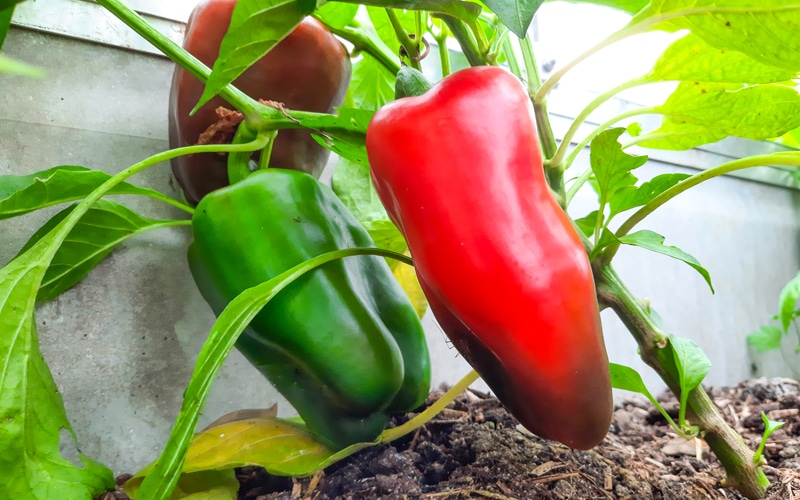
General information
Before we dive into growing bell peppers and chilies, let’s first take a moment to appreciate the general scoop on these vibrant and flavorful plants. Bell peppers and chilies are key players in kitchens all around the globe and are part of the Capsicum family. They come in a huge variety of colors, shapes, and levels of spiciness, ranging from sweet and mild bell peppers to fiery red chili peppers that add a spicy punch to dishes. Each type has its special growing conditions and care requirements, which we’ll explore further in this blog.
When to start peppers
You can start your peppers best in mid-February to mid-March. The reason for starting this early is the 120 to 140 days it takes from seed to harvest. Be aware you will need space indoors preferably with light to give the peppers a fighting chance (in our northern climate). They will stay indoors for about 3 months.
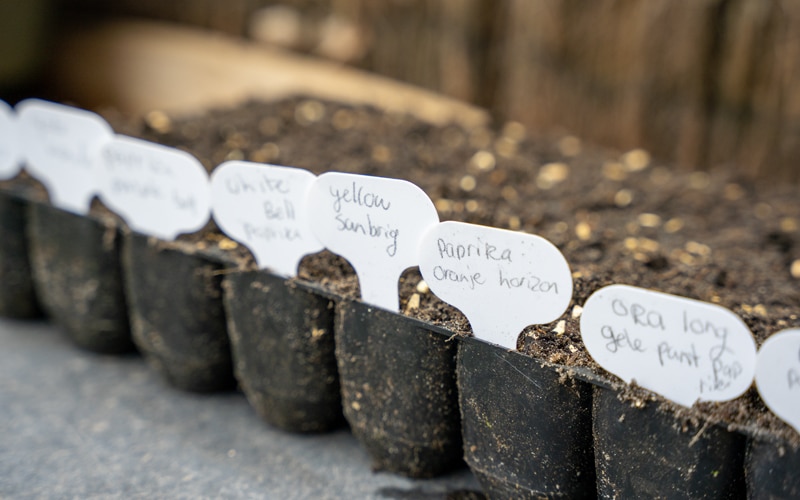
How to sow
Getting your peppers off to a good start is all about warmth. It’s advised to use a heat mat or place them on your warm window sill to germinate. You can also help them by using a propagator. The ideal temperature for germination is 30˚C. anything below 18°C and they’ll just not bother waking up.
Sowing Seeds Directly? Maybe Not Here
In our Dutch climate, sowing peppers right into the garden isn’t the best move unless you’re lucky enough to have a heated greenhouse. We recommend sowing in a p9 flower pot or our sturdy large 15-cell seed tray (also known as module tray).
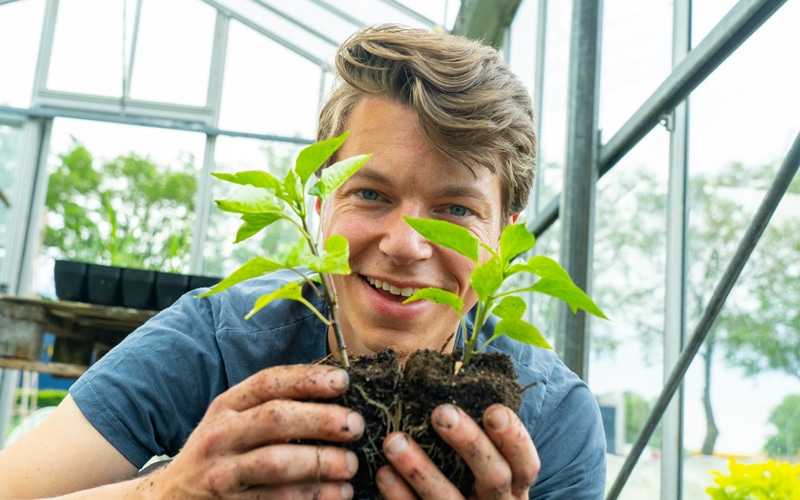
How to transplant
Transplanting your sweet peppers and chilies is easy but there are a few things to keep in mind. First of all, don’t plant pepper too deep. The stem should be no deeper than its original position. Water the soil well before transplanting to give them a good start.
Of course, you should not transplant them before the last frost is over, they can’t tolerate any frost. Any degree below zero will kill your pepper plants completely.
How to care for your peppers
Peppers crave warmth more than your average plants. So every bit of sun and shelter helps improve the quality of growth. If you like to grow peppers, consider investing in a transparent pop-up cover, greenhouse, or low tunnel. With that being said, they also love nutrients and moisture. It’s good to add nutrients by adding compost to the garden beds for planting in your peppers. With this, the water retaining possibilities of the soil improve and you will need to water less.
You don’t “need” to add any nutrients besides that initial compost layer. Don’t add any nutrients in the water when germinating and growing them. This prevents them from searching for their nutrients later on and makes for a lot of leaf growth and little harvest.
Pruning peppers for stronger plants
As the plants will continue to grow and grow they will become long and won’t be able to support their weight. Don’t feel bad about topping them at around 30 to 40cm. New shoots will form making for a more bushy plant and creating an overall stronger plant. Especially when the plants start to bear fruits they tend to get top-heavy.
Stripping excessive foliage
Over the season, you might find your plant sporting more leaves than it knows what to do with. Thinning out the lower leaves can ward off soil-borne diseases and improve airflow. And sometimes, those big leaves are more of a canopy than a help, so feel free to remove those.
When to harvest peppers
peppers take about 120 to 140 days to ripen. Of course, this depends on the variety, but in general, they take a long time to be ready to harvest.
When does one harvest peppers? They are ready to pick once they are a shiny darker shade of green or if the first color starts to appear. If you want fully mature fruits, it can take up to a month to ripen completely.
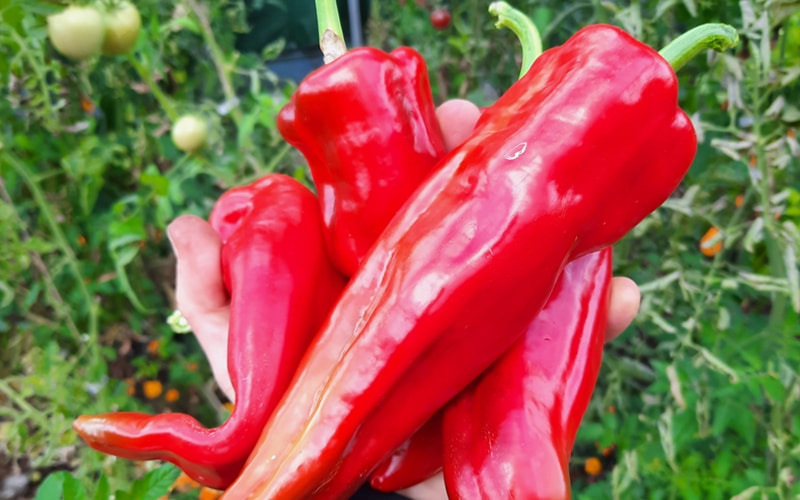
How to harvest peppers
To harvest your peppers you can cut them away. Don’t pull or force them off. This leaves a lot of damage to whatever is left. They are not easily torn.
Just grab your favorite harvesting scissors and cut away right next to the main stem.
Storing
Sweet peppers are usually best to be enjoyed as soon as possible. But you can also store them in a cool dark place. The fridge is usually a bit too cool. As long as the outer fruit layer is intact they will store for quite some time.
Chili peppers on the other hand can store for a long them as long as you dry them or add them to an oil jar. We usually store them after drying them. Important that you only pick the ones that look completely perfect as a minor defect will cause mould to form. So it’s smart to check on them now and then.
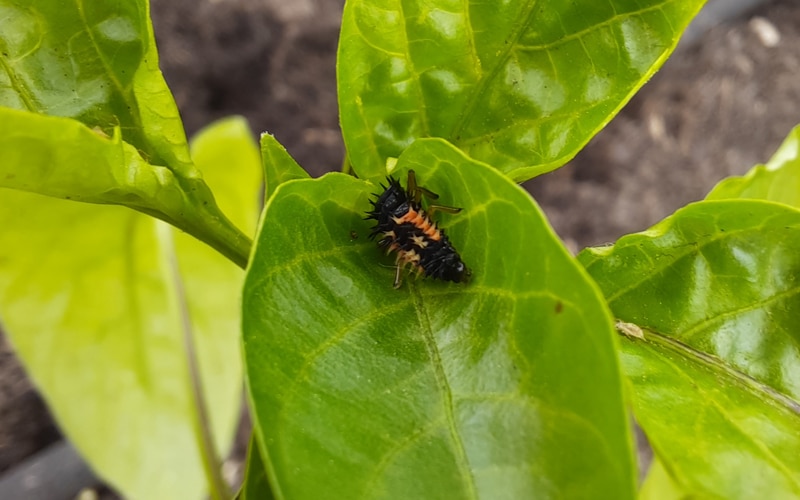
Fun peppers varieties
We’ve grown a wide variety of peppers from red to orange and chocolate brown. Taste-wise so far we’ve always referred back to classic red. That’s because we use that a lot in our cooking.
- Cherry Peppers, A small bit of spicy sweet pepper
- Purple Bell Peppers are less sweet than your classic colors but not as bitter as green.
- Roasting Pimentos, High sugar level peppers for roasting
Common pests, diseases and growth problems
Why do my peppers stay green?
The most common issue I see with growers around me is peppers not reaching their final color. This is mostly due to starting your plants to late in the season and not timing away new growth starting from August. The plant is continuously busy with creating and forming new flowers to make more peppers, but the length of the days shortens and the warmth slowly disappears.
So cut away new growth and let the plant focus all it’s energy on a few peppers.
Next to that, there is a big chance of aphids. Not detrimental when you take them off the plant. Watch out for aphids, too – a gentle wash or some helpful ladybugs can keep them in check. There are also a few good eco sprays that take care of the problem within a day.
conclusion
Growing peppers and chilies is an adventure well worth the effort. The flavors you can add to your dishes are second to none. So what are you waiting for? Start adding pepper sweetness and heat to your garden today!
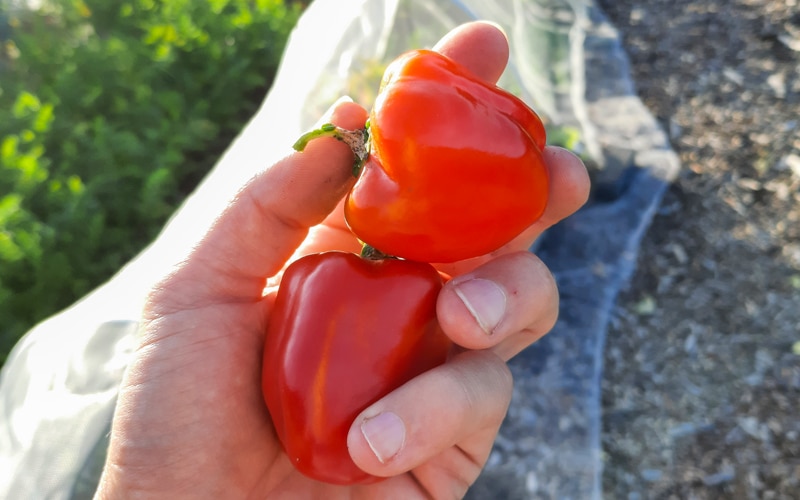


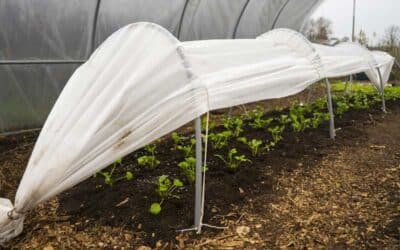

0 Comments